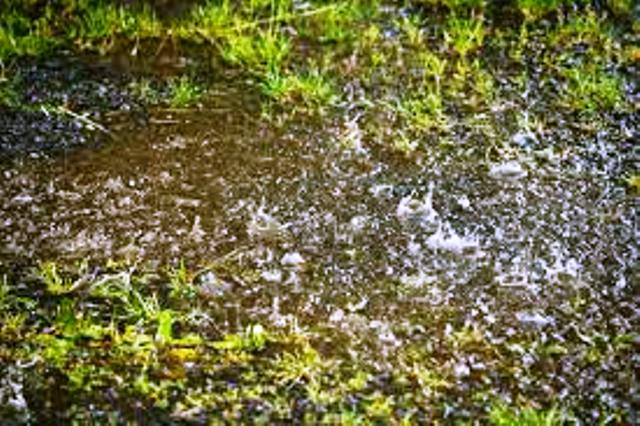
mainstreetlawn
Yard Drainage Solutions
Water is an essential component in life. Just as our bodies need water to live, so do our landscapes. We use irrigation systems in landscaping to control and direct water needed by grass and plants. While yard drainage systems are used to direct excessive rain water away from landscaping plant life, home foundations and low spots in the lawn where water pools. Below are 4 simple and inexpensive yard drainage solutions that will help preserve your lawn and landscaping, reduce mosquito populations and prevent foundation damage.
Correct Grading
The grade or slope of your yard was first and foremost a decision made by an engineer and executed by your home builder. Most engineers will design the grade of your property to direct water away from the home. Over time, the grade of your yard can change slightly. Heavy seasons of rain can impact the grade. Areas with no grass or aggregate to protect exposed soil are especially subject to run off in rainy conditions. One of the easiest ways to correct the grade is to add new soil to low-lying areas. To treat specific low spots, back fill the area with topsoil. Using a metal rake, evenly distribute the soil into the low spot and the surrounding areas to make an even fill. Compact the soil to ensure it has been filled. Plan to add new sod or other aggregate material after back filling with soil.
Install New Sod
One of the best ways to control water flow in your yard is to have new sod planted. Sod will slow excess rain water water down and absorb a good deal of it to nourish itself. If you have areas of your lawn where the grass simply won’t grow, consider whether you have the most appropriate sod for the sun exposure of the area. Bermuda sod needs about 4 hours of sunlight each day in order to thrive. If you have shady spots in your lawn, consider planting either St. Augustine or Zoysia. If you have large tree roots exposed above the soil line and they are preventing grass from growing effectively, consider contacting a professional tree service who can come out and evaluate the roots and possibly grind them out.
Extend Gutter Downspouts
Gutters on the roof line of your home will collect rain water and guide it to a downspout which then takes it down to the ground. The end of a downspout sits right above the ground next to your home. When water is flowing through your gutter/downspout system, you will likely see water coming directly out of the downspout onto the ground next to your home if not properly graded. If the downspout water is not directed away from the home it will seep underneath the house and cause foundation damage. One yard drainage solution to help prevent pooling water near the base of the downspout would be to simply extend the downspout. You can purchase gutter downspout extensions that turn angles and can be cut in various lengths. This is a relatively inexpensive way to direct unwanted water elsewhere.
Decomposed Granite
When sod is simply not possible in certain areas of your yard and you need to find a way to address the bare soil areas quickly becoming muddy spots, consider using aggregate materials such as decomposed granite or river rock to create a pathway. The advantage of using these materials to cover parts of your yard with drainage problems is that they slow the water down, facilitate drainage, eliminate muddy soils and you won’t need to bring in lots of extra soil to change the overall grade of your yard. One advantage of using decomposed granite is that it’s inexpensive and will naturally compact over time, creating a solid surface.
Conclusion: Before adopting any of the above DIY yard drainage solutions or hiring a professional to correct poor drainage by installing french drains, make sure you have a properly functioning irrigation system. A leak in an irrigation pipe can easily present as pooling water. Contact your city water utility office as many of them will come out at no charge to evaluate your irrigation system. Once you have established that your irrigation system is working properly, work to improve the grade of your lawn and add the right sod if necessary. In addition, extend your downspouts away from the house or consider having them buried and tied into an underground drainage system which leads away from your home. Finally, consider using aggregate materials such as decomposed granite or river rock to navigate the areas of your lawn that simply stay muddy.
Share this post
© 2024 · Main Street Lawn Care and Landscaping, LLC

